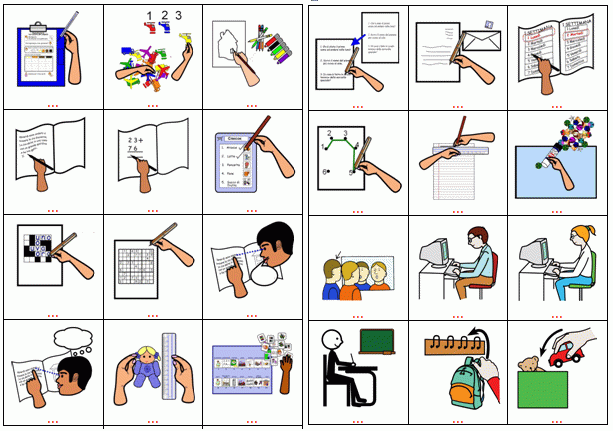Pecs Kartochki

'PECS' redirects here. For the 'Plan for European Cooperating State' charters, see. For other uses, see. The picture exchange communication system ( PECS) is a form of produced by Pyramid Educational Consultants, Inc. While the system is commonly used as a communication aid for children with (ASD), it has been used with a wide variety of learners, from preschoolers to adults, who have various communicative, cognitive, and physical impairments, including,,.
PECS has been the subject of much academic research, with currently over 85 PECS-related publications. PECS was developed in 1985 at the Delaware Autism Program by Lori Frost and Andy Bondy.
They noted that traditional communication techniques, including speech imitation, sign language, and picture point systems, relied on the teacher to initiate social interactions and none focused on teaching students to initiate interactions. Based on these observations, Frost and Bondy created a functional means of communication for individuals with a variety of communication challenges. PECS is designed to teach functional communication skills with an initial focus on spontaneous communication. It has been and continues to be implemented in a variety of settings and contexts (home, school, community) so users have the skills to communicate their wants and needs. PECS does not require complex or expensive materials since it uses picture symbols as the modality. PECS is a method to teach young children or any individual with a communication impairment a way to communicate within a social context. Research has shown that many preschoolers using PECS also begin developing speech.
Based on the current evidence base, PECS has been described as an emerging treatment shown to increase communication skills for individuals with ASD. Contents • • • • • • • Philosophy [ ] The training protocol is based on the principles of. The goal of PECS is spontaneous and functional communication.
Verbal prompts are not used during the early phases, thus building immediate initiation and avoiding prompt dependency. PECS begins with teaching a student to exchange a picture of a desired item with a teacher/communicative partner, who immediately honors the request. After the student learns to spontaneously request for a desired item, the system goes on to teach discrimination among symbols and then how to construct a simple sentence. In the most advanced phases, individuals are taught to respond to questions and to comment. Additionally, descriptive language concepts such as size, shape, color, number, etc. Are also taught so the student can make their message more specific.

Tell me more french v10 ten levels free download for android. For example, I want big yellow ball. PECS Protocol [ ] After a preparation, the PECS Protocol occurs in six phases: • Reinforcer Inventory: Before implementing the PECS protocol, the teacher develops an inventory of which items the learner likes. This way, no verbal prompting is needed to ask the child what they want. The chosen reinforcers should be consistently motivating to the user. • Phase 1: How to Communicate During Phase I, the focus is on teaching the student to initiate social communication. The student is taught to approach the communicative partner with a picture of a desired object or food item and place the picture in the trainer's hand, in order to receive the desired reward.
This exchange is taught using one picture, selected by the trainer. Within Phase I, two trainers are utilized. One trainer acts as the student's communicative partner, and the other trainer acts as the physical prompter, who prompts the student to reach towards the communicative partner with the picture in exchange for the student's reward. • Phase 2: Distance and Persistence During Phase 2, the student is taught to initiate social interaction when the communicative partner is not nearby and waiting. The student is taught to persevere if the reward is not immediately provided, to communicate over longer distances whether it be across a larger table or walking farther distances to reach his/her communicative partner, and initiate spontaneous communication. Teaching the child persistence is comparable to a typically developing child raising his/her voice to gain attention when initial attempts are not recognized by the communication partner. Training should progress across different settings, with different communicative partners, and different types of reinforcing items to assist in the generalization of PECS usage.
• Phase 3: Discrimination Between Symbols During this phase, the student is taught discrimination of symbols and how to select the symbol which depicts a desired item. Once the student demonstrates mastery with pairings of preferred and non-preferred pictures, discrimination between two preferred pictures is introduced.The picture array is increased until the child can discriminate among all the pictures in the picture book. Frost and Bondy's 4-Step Error Correction Procedure is used to correct mistakes. For children who have difficulty with picture discrimination, mini objects can be used followed by a gradual shift to pictures. Students progress to this step after they can reliably request their favorite items from a variety of people.